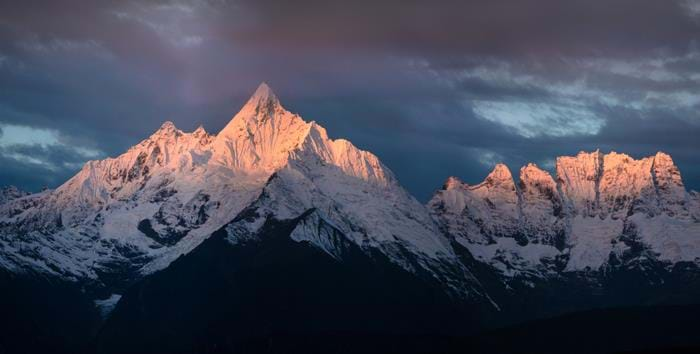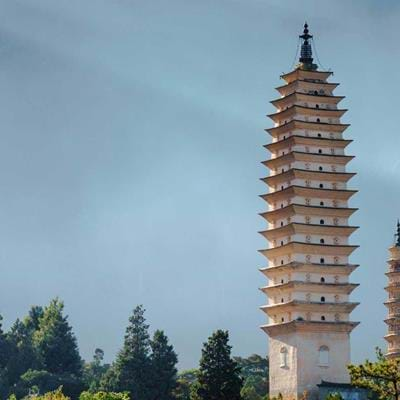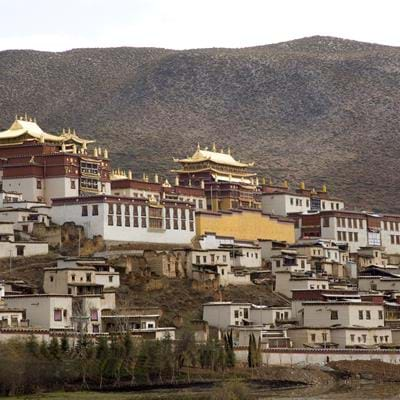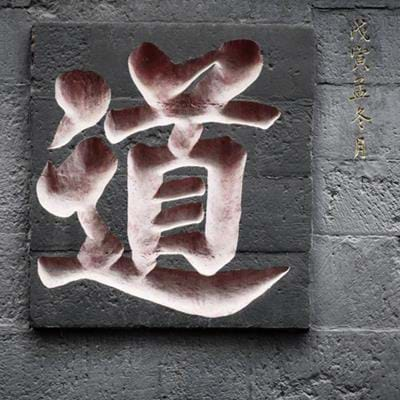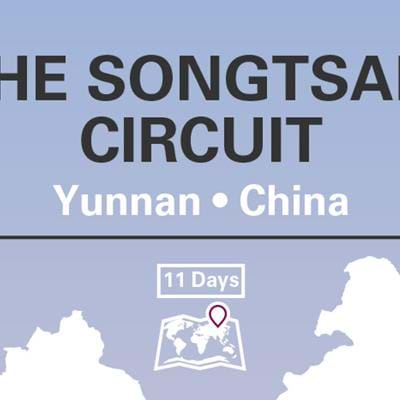China 12.07.2016 David Abram
Travel writer David Abram follows the fabulously scenic Songtsam Circuit around the snow mountains of northwestern Yunnan.
Picture the scene: I’m at the head of a vast, Himalayan valley, gazing at a Tibetan ice peak of otherworldly beauty, a plume of spindrift and cloud streaming from its white summit. Far below, I can just make out a village of whitewashed farmsteads wreathed in juniper smoke and prayer flags, while behind me, in the meadows that lap the edge of a magnificent larch forest ablaze with autumn colour, the tinkling of bells reveals the presence of yaks and goats grazing in the early morning sunshine.
I can’t quite believe the immensity of the vision spread at my feet. It’s on a scale you only experience in the world’s highest ranges.
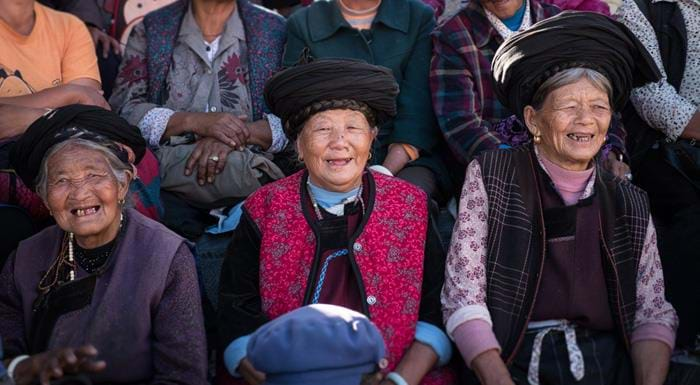
Now imagine where I’ll be spending the night... In a frozen tent maybe? Or a smoky teashop somewhere along the trail? Perhaps a barn on a remote farm? Wrong. I’m actually reclined in a cushioned window seat, fragrant Italian coffee in hand, surrounded by varnished wood and antique rugs while a fire crackles cosily in the hearth, and I’ve just uploaded photos of sunrise I took earlier to my Facebook page. It’s hard not to feel just a twinge of delight at the improbability of it all!
Over more than three decades, I’ve travelled the Himalayas from Pakistan to Arunachal Pradesh, and I can honestly say I’ve not encountered anywhere you can stay so close to the snow line, amid scenery as jaw-dropping as this, without having to trek for days, or weeks.
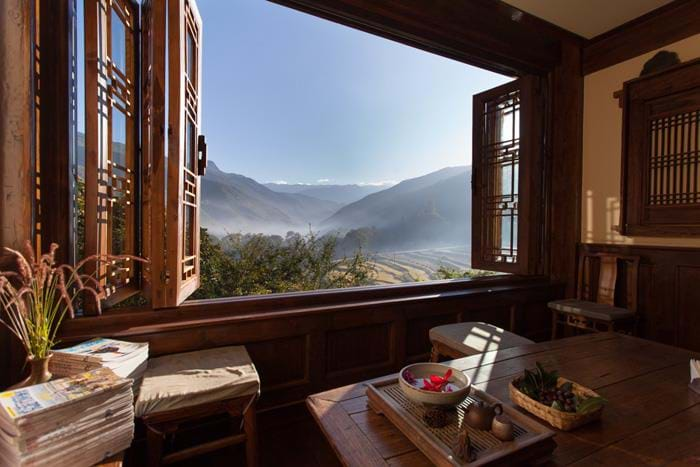
But I’m in China, not Nepal. A shiny white Landcruiser is parked in the driveway below, ready to whisk me off to an equally beautiful bolthole somewhere in the mountains later in the day, along roads that would make even the Swiss flush with admiration.
Taking advantage of the 21st century Chinese infrastructure, a chain of luxury lodges was recently inaugurated in this remote northwestern corner of Yunnan, where the mountains rise to meet the grasslands of the Tibetan Plateau. Run by a company called ‘Songtsam’, the circuit allows you to experience the sublime landscapes and fascinating local cultures in great comfort. “Himalayas for Softies” should be their strapline. Or “Summit Views Without the Sweat”.
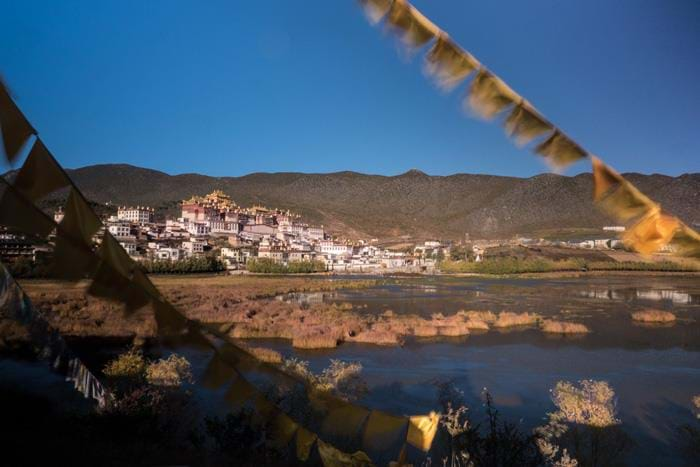
I’m nearing the end of a week-long loop from the regional capital, Shangri La, and the views have been stupendous from start to finish. The route, which TransIndus tailored to suit my time frame and interests, followed a series of dizzyingly deep, interconnected valleys gouged by the Yangtze and Mekong rivers. It was along these same wild trenches that tea was for centuries carried on the backs of porters to Lhasa in Tibet, where it was exchanged for war horses which the Chinese Emperors needed to repel the Manchurian hordes harassing their northern borders, along the Great Wall.
Sleek highways have long since replaced the cobbles of the old Tea-Horse Road, but the landscapes remain undiminished. Ranging from Alpine, well-watered forests and snow-dusted ridges in the south, to barren, Trans-Himalayan gorges midway around, they reach a cadence at the magnificent Kawakarpo massif in the far north, before stepping down to the lush rice terraces of the subtropical Lacang (Mekong) Valley.
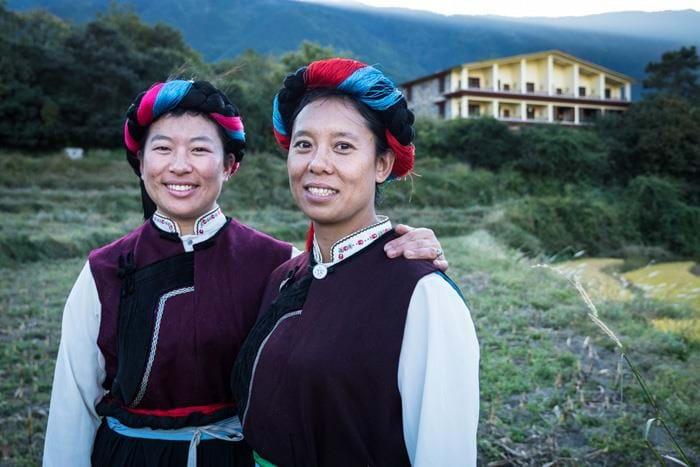
The lodges themselves were a delight, with warm-toned, Tibetan-style interiors and smiling staff recruited from local villages. All five of the hotels occupy plum locations, from where you can venture further into the hills to visit crafts workshops, monasteries, sacred Buddhist caves and other places of interest, including a nature sanctuary where visitors are guaranteed sightings of the extremely rare Yunnan snub-nosed monkey.
Most of the inhabitants of the settlements I passed through were drawn from the province’s 25 minority groups: principally Tibetan, Naxi, Lisu, Yi or Bai. Traditional dress still seems to be the norm among the older generation, and the presence of Buddhism ubiquitous.
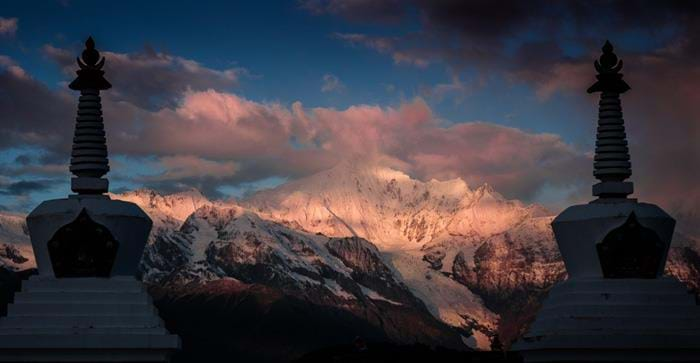
My tour started in the regional capital, Shangri La, which I flew into via Chengdu in neighbouring Sichuan. At an altitude of 3,300m, the city holds the great cultural landmark of the area, the Ganden Sumtsenlin monastery, and Songtsam’s hotel happens to be right next to the complex.
Reflected in the glassy surface of a lake edged with copper-coloured banks, the gilded rooftops, and ochre-, russet- and white-painted walls of the great building look superb against their backdrop of scrubby hills. At first light, a mist of juniper incense engulfs the adjacent village, while later in the day, huge cloud shadows scud across the bare slopes behind, adding great drama to the scene.
If Ganden Sumtsenlin is the man-made poster-piece of the Songtsam Circuit, its natural counterpart – in fact, the great spectacle of the route – is Kawakarpo mountain in the far north. Regarded as sacred by Tibetans, the vast snow massif dominates the landscape for literally hundreds of miles in every direction. Its saw-toothed summits and convoluted connecting ridges soar nearly five vertical kilometres above the Mekong valley, and have never been climbed. After an entire Japanese expedition perished attempting to scale the peak in the 1990s, a law was passed banning any further encroachments. Buddhists believe Kawakarpo to be the seat of the legendary Warrior Guardian, Kawagebo, and each year make a sacred pilgrimage around it, crossing breathlessly high passes in the course of an arduous fortnight’s trek.
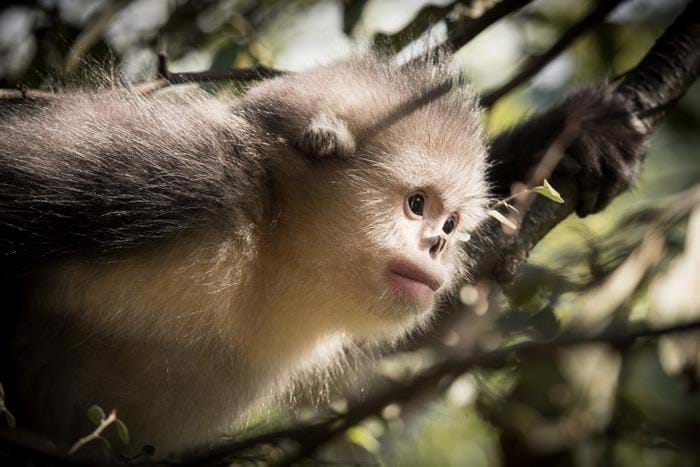
For most of the year, Kawakarpo hides its snow summits and hanging glaciers under a shroud of mist and monsoon cloud. But my luck was in. Barely a whisp of cloud troubled its peaks for the entire three days of my stay.
At dawn on the first day, my guide, Renching, woke me early and together we drove around the valley to a viewing platform from where the entire summit ridge is visible. Even in the pre-dawn darkness the sight was wondrous. Shining in the moonlight, the snow peaks radiated an otherworldly blue light. Then, as the sky behind lightened, the mighty ice pyramids were suddenly illuminated by a molten glow the like of which I doubt I shall see many times in my life.
As the rosy hue spread down the snowfields, renching performed ritual prostrations beside me, murmuring the Buddhist mantra ‘Om Mani Padmi Hum’, ‘Hail to Thee, Jewel in the Lotus’ – a wonderfully apt phrase given the spectacle before us.
For once, my camera worked perfectly. In addition to a series of amazing stills, I was able to capture a timelapse sequence revealing the way the light grew and changed colour as it slid down the icy slopes towards the rock escarpments below. The clip barely hints at how mesmeric the sunrise really was that morning, but it makes a great start to the little video I made about my trip!
